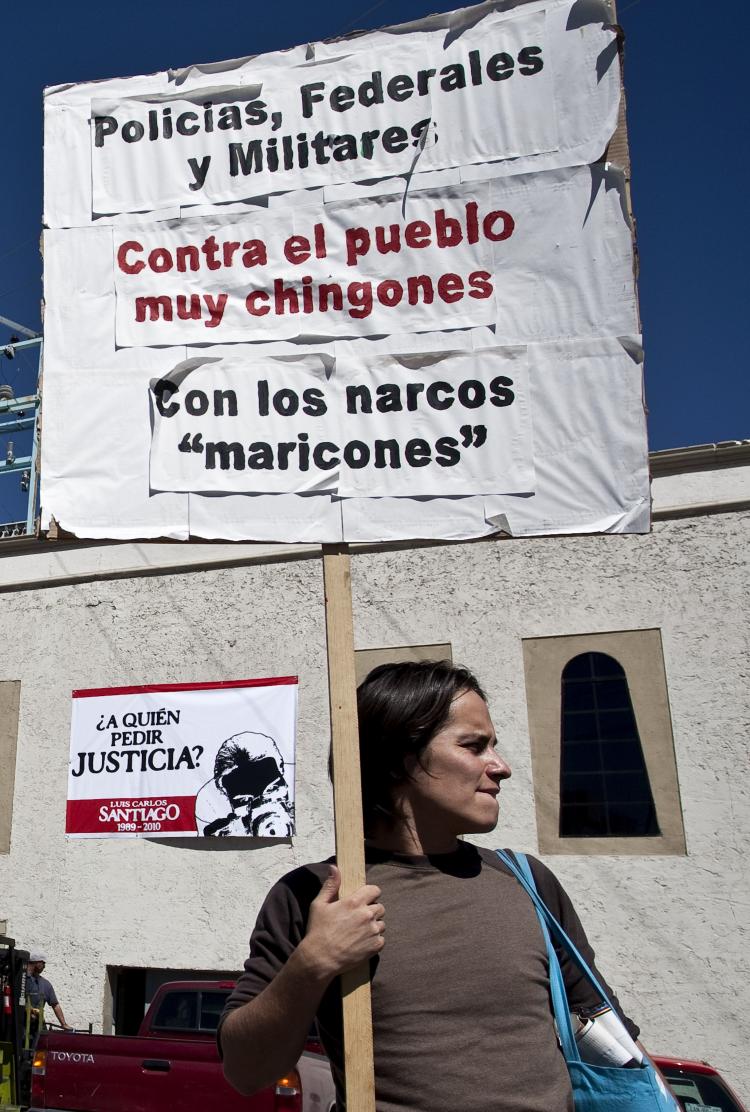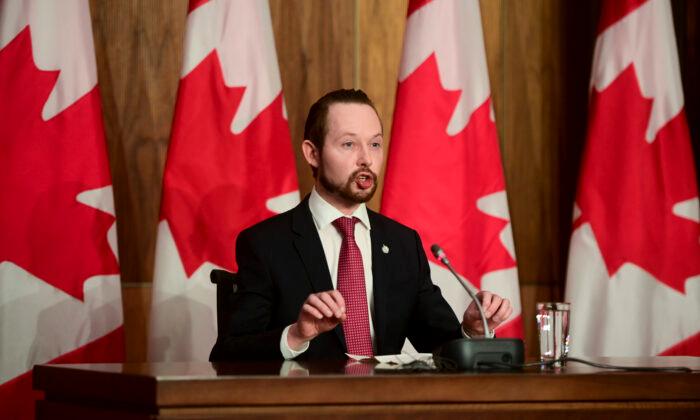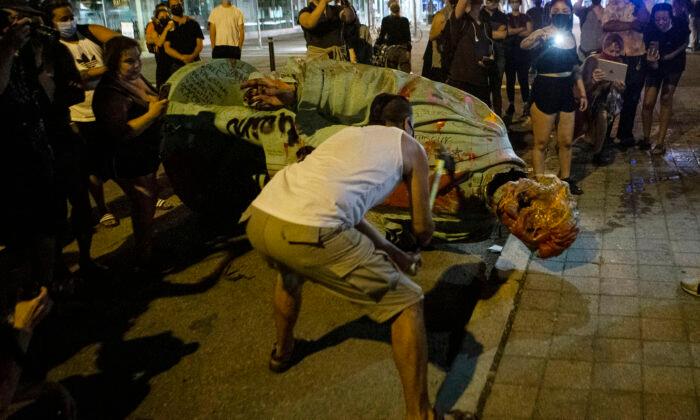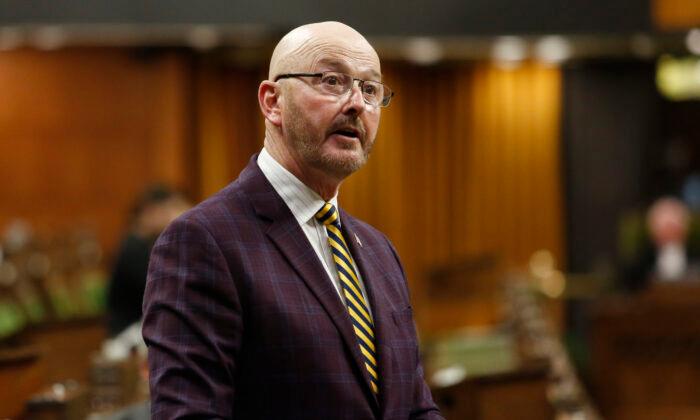Eighty-seven journalists were killed in the line of duty worldwide in 2010, with Pakistan, Mexico, and Honduras bearing the brunt of the killings, according to Canadian Journalists for Free Expression (CJFE).
The countries, which account for 43 percent of journalists killed in 2010—14 in Pakistan, 13 in Mexico, and 10 in Honduras—also share the parallel problem of impunity; the killers are not being brought to justice.
“The governments of all three countries have failed utterly to protect the safety of journalists,” CJFE said in a release.
The figure for 2010 is down from the 101 journalists killed in 2009, but that figure included the massacre of 32 journalists on Nov. 23 in the Philippines—the most journalists ever killed in one day.
“On the surface, the fact that 14 fewer journalists were killed this year than last year is good news,” said CJFE president Arnold Amber. “But quite obviously many journalists live with this constant threat just for doing their jobs.”
Most of the 87 slain this year were deliberately targeted, and many had reported receiving death threats because of the type of investigative stories they were covering in the weeks or months before they died, the organization said.
The ways in which some of the 87 were killed paint a chilling picture of the dangers journalists face.
Turkish journalist Metin Alata?, who was killed on April 4, appears to have been forced to commit suicide. Mexican journalist Marco Aurelio Martínez Tijerina was kidnapped on July 9 and found dead the next day with at least one bullet to the head and signs of torture.
Military officers in the Democratic Republic of Congo shot journalist Patient Chebeya Bankome at his home on April 5, and journalists Pervez Khan and Abdul Wahab were killed by a suicide bomber in Pakistan on Dec. 6.
In one case, Yemen journalist Mohammed Shu’i Al-Rabu’i was killed on Feb. 13 by four or five gunmen who had been arrested after attacking him a few months earlier but were released before charges were laid. Security Chief Abdelrazeq Az-Zareq said that he took “full responsibility” for their release at the end of 2009, according to CJFE.
Journalists are often targeted either at work or at home, and there are many reports of police or military involvement, said CJFE, which works to promote and defend free expression and press freedom in Canada and abroad.
In Mexico, journalists face threats from three groups—drug traffickers, police, and members of the army. Mexican president Felipe Calderón’s controversial move to intensify drug enforcement has seen increased violence and made reporting significantly more dangerous, with the result that many journalists have fled the country.
CJFE also noted the new trend in Pakistan of suicide bombings of journalists. Of the 14 killed there in 2010, six died from bombings; the other eight were shot in various attacks.
Two journalists who were killed in a Dec. 6 suicide bombing were covering an anti-terrorism strategy discussion at a council meeting in the northwest Pakistani border town of Ghalanai.
While local journalists face the greatest danger in carrying out their work, CJFE recorded several attacks and killings of foreign journalists working abroad in 2010.
These include British journalist Rupert Hamer in Afghanistan, Tongalese journalist Stanislas Ocloo in Angola, Italian journalist Fabio Polenghi in Thailand, Turkish journalist Cevdet K?l?çlar in international waters near Israel, and American journalist James P. Hunter in Afghanistan.
Kidnappings of journalists, both local and foreign, continue to be a major problem especially in Mexico, Pakistan, Nigeria, Somalia, and other nations, the organization said.
Canadian journalist Khadija Abdul Qahaar, also known as Beverly Giesbrecht, was abducted in Pakistan on Nov. 11, 2008. She remains missing, but unconfirmed reports surfaced in November that she may have died.
“In releasing this report, CJFE hopes to draw attention to the risks that journalists face around the world,” Amber said.
“Our organization is calling on Canadians and the international community to work together to protect the rights of journalists and to end the tragic culture of impunity which allows most murders of journalists to go unpunished.”
CJFE records the number of journalists who are killed or targeted and compiles its statistics from the reports of the more than 90 member groups that make up the Toronto-based International Freedom of Expression Exchange, which CJFE manages.
The countries, which account for 43 percent of journalists killed in 2010—14 in Pakistan, 13 in Mexico, and 10 in Honduras—also share the parallel problem of impunity; the killers are not being brought to justice.
“The governments of all three countries have failed utterly to protect the safety of journalists,” CJFE said in a release.
The figure for 2010 is down from the 101 journalists killed in 2009, but that figure included the massacre of 32 journalists on Nov. 23 in the Philippines—the most journalists ever killed in one day.
“On the surface, the fact that 14 fewer journalists were killed this year than last year is good news,” said CJFE president Arnold Amber. “But quite obviously many journalists live with this constant threat just for doing their jobs.”
Most of the 87 slain this year were deliberately targeted, and many had reported receiving death threats because of the type of investigative stories they were covering in the weeks or months before they died, the organization said.
The ways in which some of the 87 were killed paint a chilling picture of the dangers journalists face.
Turkish journalist Metin Alata?, who was killed on April 4, appears to have been forced to commit suicide. Mexican journalist Marco Aurelio Martínez Tijerina was kidnapped on July 9 and found dead the next day with at least one bullet to the head and signs of torture.
Military officers in the Democratic Republic of Congo shot journalist Patient Chebeya Bankome at his home on April 5, and journalists Pervez Khan and Abdul Wahab were killed by a suicide bomber in Pakistan on Dec. 6.
In one case, Yemen journalist Mohammed Shu’i Al-Rabu’i was killed on Feb. 13 by four or five gunmen who had been arrested after attacking him a few months earlier but were released before charges were laid. Security Chief Abdelrazeq Az-Zareq said that he took “full responsibility” for their release at the end of 2009, according to CJFE.
Journalists are often targeted either at work or at home, and there are many reports of police or military involvement, said CJFE, which works to promote and defend free expression and press freedom in Canada and abroad.
In Mexico, journalists face threats from three groups—drug traffickers, police, and members of the army. Mexican president Felipe Calderón’s controversial move to intensify drug enforcement has seen increased violence and made reporting significantly more dangerous, with the result that many journalists have fled the country.
CJFE also noted the new trend in Pakistan of suicide bombings of journalists. Of the 14 killed there in 2010, six died from bombings; the other eight were shot in various attacks.
Two journalists who were killed in a Dec. 6 suicide bombing were covering an anti-terrorism strategy discussion at a council meeting in the northwest Pakistani border town of Ghalanai.
While local journalists face the greatest danger in carrying out their work, CJFE recorded several attacks and killings of foreign journalists working abroad in 2010.
These include British journalist Rupert Hamer in Afghanistan, Tongalese journalist Stanislas Ocloo in Angola, Italian journalist Fabio Polenghi in Thailand, Turkish journalist Cevdet K?l?çlar in international waters near Israel, and American journalist James P. Hunter in Afghanistan.
Kidnappings of journalists, both local and foreign, continue to be a major problem especially in Mexico, Pakistan, Nigeria, Somalia, and other nations, the organization said.
Canadian journalist Khadija Abdul Qahaar, also known as Beverly Giesbrecht, was abducted in Pakistan on Nov. 11, 2008. She remains missing, but unconfirmed reports surfaced in November that she may have died.
“In releasing this report, CJFE hopes to draw attention to the risks that journalists face around the world,” Amber said.
“Our organization is calling on Canadians and the international community to work together to protect the rights of journalists and to end the tragic culture of impunity which allows most murders of journalists to go unpunished.”
CJFE records the number of journalists who are killed or targeted and compiles its statistics from the reports of the more than 90 member groups that make up the Toronto-based International Freedom of Expression Exchange, which CJFE manages.







